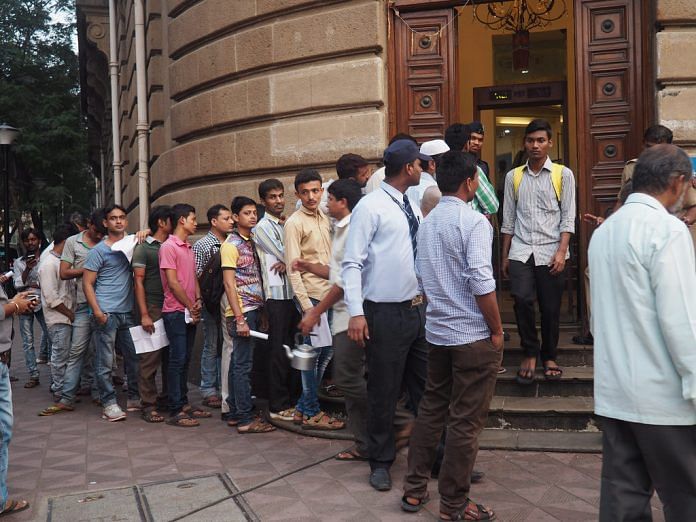Since there were multiple objectives of demonetisation, one cannot completely say whether the experiment was a failure or a success.
The initial metric of evaluating the success or failure of demonetisation was never clear. The first narrative was focussed on black money, curbing terrorist financing or counterfeit currency. Later on, the focus shifted to providing incentives for digital payments, and much later to widening their tax base. So, since there were multiple objectives, one cannot completely say whether the experiment was a failure or a success.
A big stand-out feature is that 86 percent currency going instantly overnight out of circulation was such a huge disruptive event and the stand-out feature is that the economy could withstand it. For example, by comparison, Venezuela at the same time attempted discontinuation of its high value notes and there were riots on the street and within one or two days, they had to reverse their decision.
Looking at each of the objectives, black money has two components: the stock of black money and the flow of black money. The ministries’ own database from their past, records of income tax raids and confiscation of disproportionate assets shows that 93 percent of disproportionate assets, which are confiscated are not in the form of cash. They are kept in the form of benami land or gold and so on. We clearly knew that large proportion of the stock of black money is not in the form of cash.
When it comes to flow it is true that much of it circulates as high value notes. On that account, we have had very limited success because 99 percent of the cash is come back, as we learn today. In any case, one can’t beat the ingenuity of black money operators.
We must now look at other aspects that demonetization brought about: the increase in digital transaction, which has almost doubled. And we have seen the widening of the income tax net, and a huge jump in the number of assessee. As many as 1.8 million accounts have been identified with suspiciously large amounts, so they will be investigated. Explanations will be sought.
And there is a move to bring more and more of the informal economy into the formal economy, and thereby increasing tax collections, savings, investments into the formal financial sector and so on. These are all medium to long term agenda items and to that extent, the demonetisation event has contributed.
But we cannot forget that demonetisation led to drop in GDP growth since it affected the rural and the informal economy adversely. We lost almost one percentage point of GDP.
The RBI had to incur the costs of demonetisation in terms of direct printing costs and also in terms of having to pay such an amount of interest on the excess cash which was coming into the system. That’s why the dividend paid by the RBI to the government of India went down by half instead of 60-65,000 crores, it was only 30,000 crores this year, which is also a cost of demonetization.
Ajit Ranade is an economic commentator.






